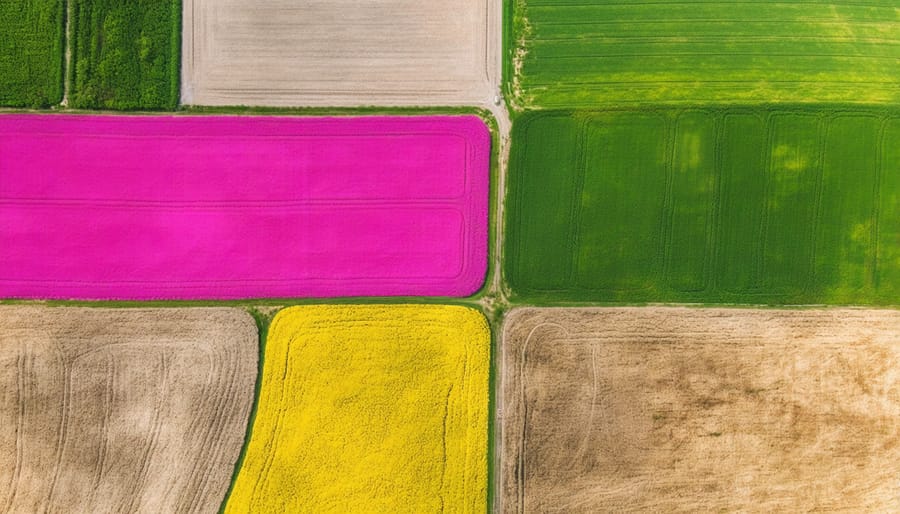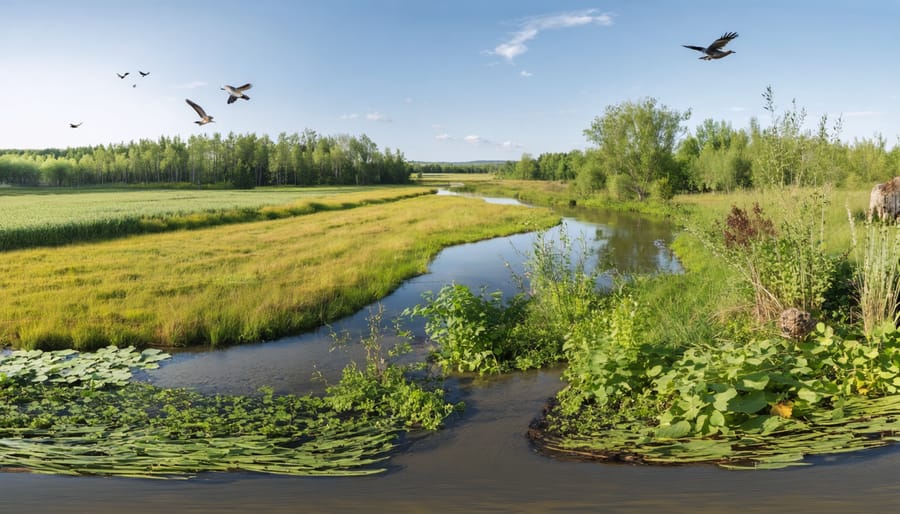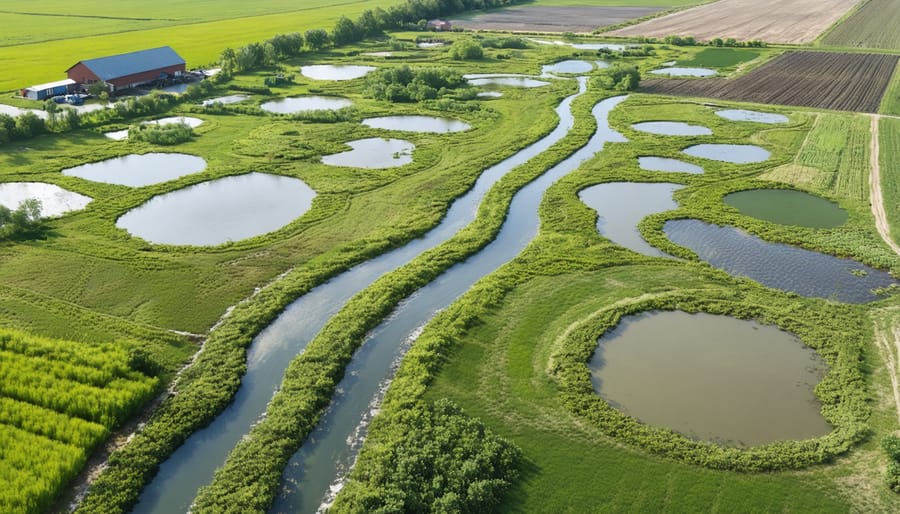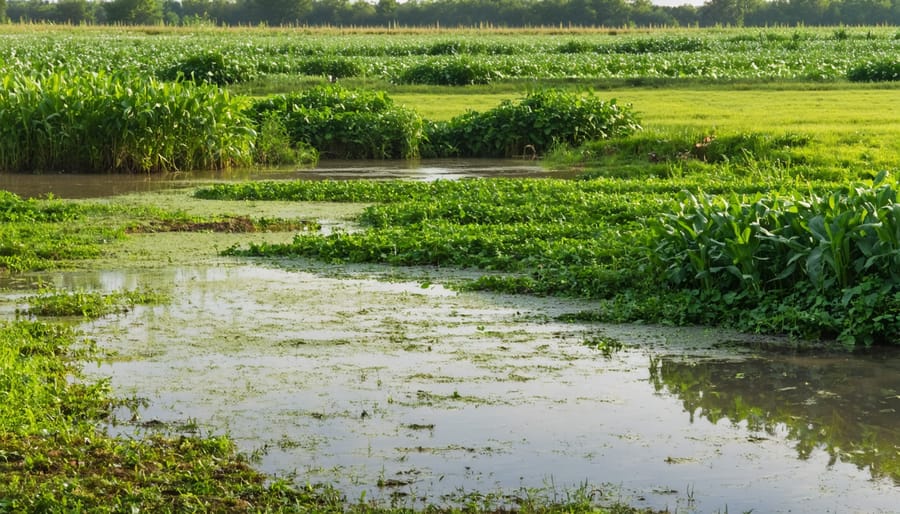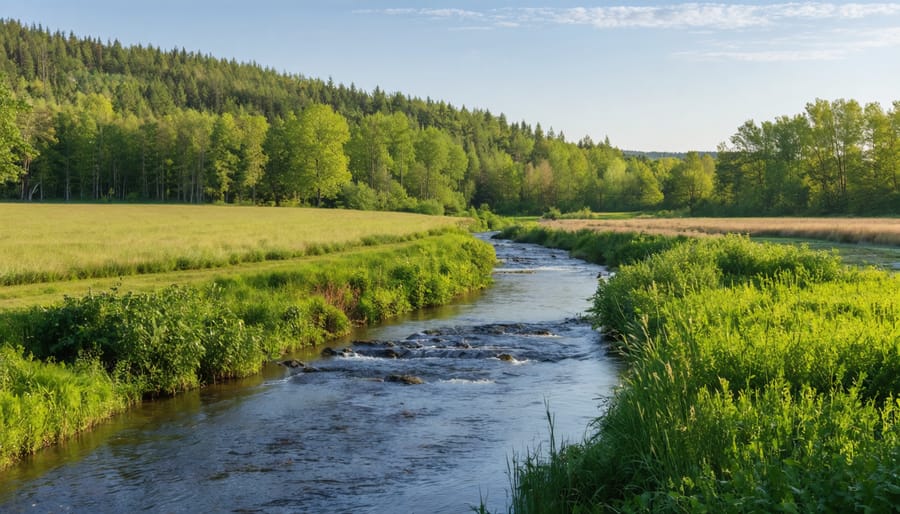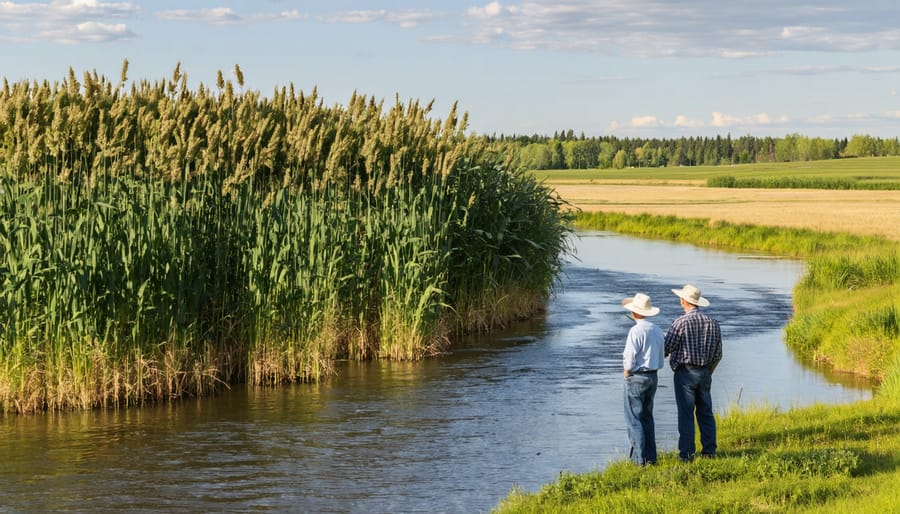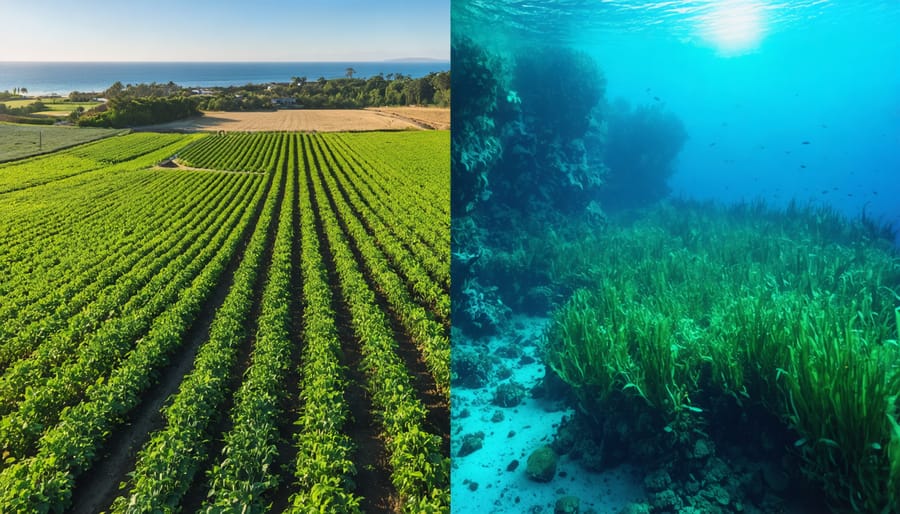Forests are the lungs of our planet, breathing in carbon dioxide and breathing out oxygen. But they are also our greatest allies in the fight against climate change. As living carbon sinks, forests have an unparalleled ability to absorb CO2 from the atmosphere and store it long-term in their biomass and soils.
In a world desperately seeking solutions to rising temperatures and greenhouse gas levels, harnessing the power of forests is a natural climate solution with immense potential. By preserving existing forests, reforesting degraded lands, and integrating trees into agricultural landscapes through agroforestry and regenerative organic agriculture, we can significantly increase carbon sequestration while reaping a host of other ecological benefits.
It’s time to recognize forests as more than just resources to be exploited, but as essential partners in stabilizing our climate and safeguarding our future on this planet. Investing in forest conservation and restoration is one of the most cost-effective and readily available strategies we have to turn the tide on global warming before it’s too late. The carbon-absorbing capacity of Earth’s forests buys us precious time to rein in emissions and transition to a low-carbon economy. We must act now to protect and expand these invaluable carbon sinks, for the sake of ourselves and generations to come.
The Science Behind Forests as Carbon Sinks
How Trees Absorb and Store Carbon
Trees absorb carbon dioxide from the atmosphere through the process of photosynthesis. As sunlight strikes the leaves, it powers a reaction that converts CO2 and water into glucose, which the tree uses for energy and growth. The carbon becomes incorporated into the tree’s biomass – its trunk, branches, leaves, and roots.
Forests act as carbon sinks because trees store this carbon for long periods, often decades or even centuries. As a tree grows, it can sequester increasing amounts of carbon each year in its expanding biomass. Eventually, the carbon stored in wood products or forest soils can remain locked away for a long time, keeping it out of the atmosphere.
The carbon storage capacity of trees varies by species, age, and environmental conditions. Hardwood species like oak tend to store more carbon than softwoods. Old growth forests are especially important sinks, as mature trees can hold vast amounts of carbon. Proper sustainable forest management practices, like those increasingly adopted by Canadian foresters, can optimize carbon uptake and storage while still allowing for timber harvest. By understanding these natural carbon cycle processes, we can harness the power of trees to offset emissions and combat climate change.
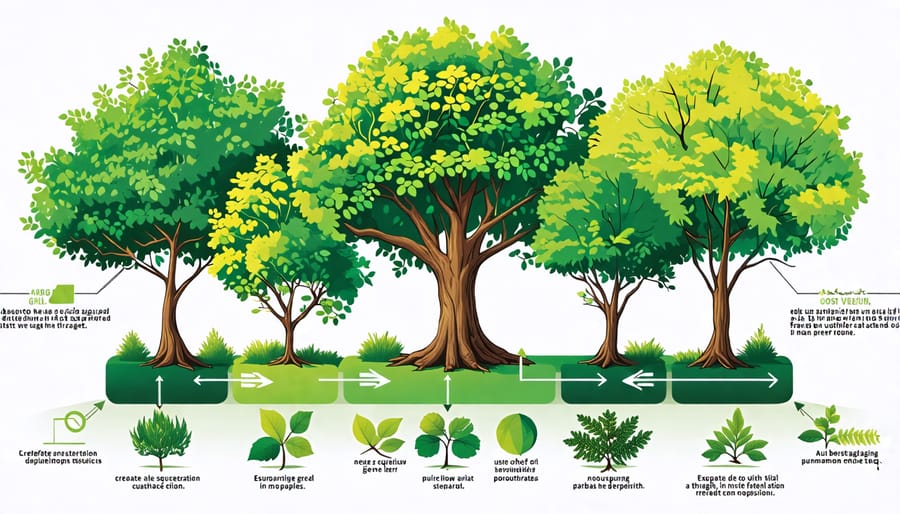
The Impact of Forest Management Practices
Forest management practices significantly impact the carbon sequestration potential of forests. Tree species selection is a key factor, as different species have varying growth rates and lifespans, which affect their ability to store carbon long-term. Faster-growing species like hybrid poplar can sequester carbon quickly, while slower-growing species like spruce store carbon for longer periods. Spacing between trees also influences carbon uptake, with wider spacing promoting faster individual tree growth but potentially reducing total carbon storage per hectare. Harvesting practices, such as clear-cutting versus selective logging, can either release stored carbon back into the atmosphere or maintain a more consistent carbon stock over time. Ultimately, the most effective forest management for carbon sequestration involves a balanced approach that optimizes tree species, spacing, and harvesting based on site-specific conditions. By implementing these practices strategically, Canadian farmers and landowners can enhance the role of their forested lands in mitigating climate change while also supporting sustainable timber production and other ecosystem services.
Integrating Forests into Sustainable Farm Systems
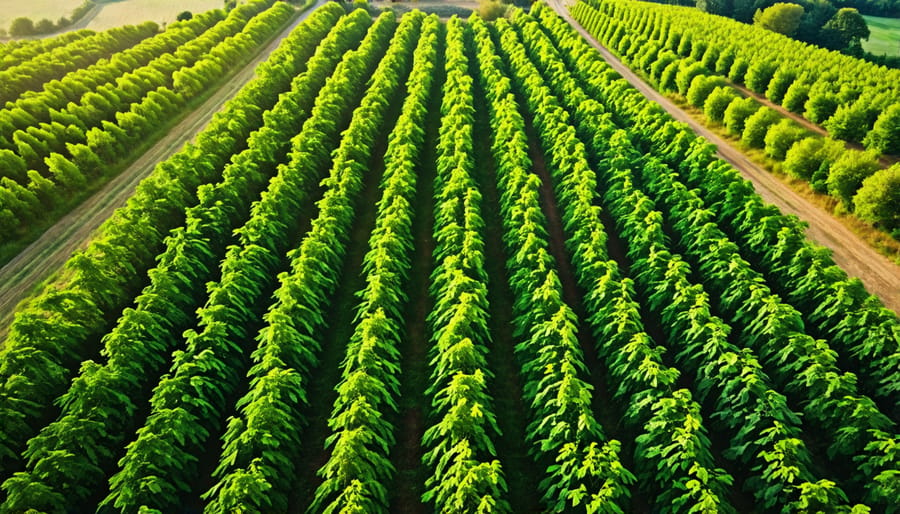
Agroforestry Techniques for Alberta Farms
Agroforestry, the integration of trees and shrubs into agricultural systems, offers Alberta farmers a powerful tool for carbon sequestration and sustainable land management. Shelterbelts, strategically planted rows of trees that protect crops and livestock from wind and erosion, are well-suited to Alberta’s climate and can enhance soil health and biodiversity. Silvopasture, the practice of grazing animals among trees, is another promising technique for Alberta’s ranchers, providing shade and forage for cattle while storing carbon in the trees’ biomass. Alley cropping, where crops are grown between rows of trees, can diversify farm income and improve soil fertility through leaf litter and nitrogen fixation. Riparian buffers, strips of trees planted along waterways, stabilize banks, filter runoff, and create wildlife habitat. By adopting these agroforestry practices, Alberta farmers can not only contribute to climate change mitigation but also reap benefits like increased crop yields, improved animal welfare, and enhanced resilience to extreme weather events. With support from local extension services and cost-share programs, more Alberta farmers can embrace agroforestry as a win-win solution for their operations and the environment.
Choosing the Right Trees for Carbon Sequestration
When selecting trees for carbon sequestration on your farm, consider species that are well-suited to your local climate and soil conditions. Native species often have the best chance of thriving and providing long-term carbon storage benefits. In Alberta, some top choices include trembling aspen, balsam poplar, white spruce, and lodgepole pine. These species are adapted to the region’s conditions and can impact soil health positively.
It’s also important to choose trees that align with your farm management goals. If you’re looking to incorporate agroforestry practices, consider species that provide additional benefits like windbreaks, shade for livestock, or even fruit and nut production. For example, hybrid poplar can be harvested for wood products while still providing carbon sequestration.
Diversity is key when planning your carbon sink forest. Aim for a mix of species with varying growth rates and lifespans. This ensures that your forest will continue to sequester carbon over the long term as some trees mature and others take their place. Consult with local forestry experts or extension services to determine the best species mix for your specific farm and goals.
By carefully selecting the right trees for your carbon sink forest, you’ll maximize its potential for sequestering atmospheric carbon while also enhancing the overall sustainability and resilience of your farm.
Case Study: A Carbon-Capturing Alberta Farm
Located in the heart of Alberta’s agricultural region, Lakeside Farms has successfully integrated forests into their operations to offset carbon emissions and enhance sustainability. By dedicating a portion of their land to tree planting and forest management, they have created a thriving carbon sink that absorbs and stores atmospheric CO2.
The farm’s owners, John and Sarah, worked closely with local forestry experts to select native tree species well-suited to the region’s climate and soil conditions. Over the past decade, they have planted over 50,000 trees, including poplar, spruce, and pine, across 100 acres of their property.
In addition to sequestering carbon, the forest provides numerous other benefits. It acts as a windbreak, reducing soil erosion and protecting crops from harsh weather conditions. The trees also improve water retention and quality, supporting the farm’s irrigation needs and local biodiversity.
Lakeside Farms serves as an inspiring example of how Alberta farmers can actively contribute to climate change mitigation while enhancing the long-term sustainability and resilience of their operations. By embracing the power of forests as carbon sinks, they demonstrate that agriculture and environmental stewardship can go hand in hand, creating a more promising future for generations to come.
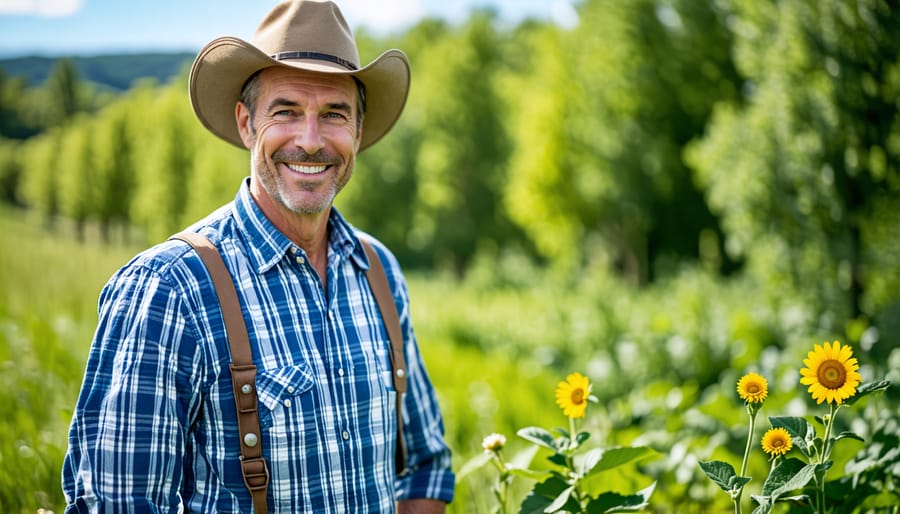
The Big Picture Benefits for Farms and Communities
Farm forests provide a myriad of benefits that extend far beyond the boundaries of individual farms. By strategically integrating trees into agricultural landscapes, farmers can play a vital role in mitigating climate change, enhancing biodiversity, improving soil health and water quality, and bolstering the resilience of rural economies.
As trees grow, they absorb carbon dioxide from the atmosphere and store it in their biomass and the soil beneath them. This natural process of carbon sequestration helps to offset greenhouse gas emissions and combat global warming. With the right management practices, farm forests can become long-term carbon sinks, contributing significantly to Canada’s climate change mitigation efforts.
Moreover, farm forests create habitats for a wide range of flora and fauna, promoting biodiversity and supporting the delicate balance of local ecosystems. By providing shelter, food, and corridors for wildlife movement, these tree-rich environments foster the growth and survival of numerous species, many of which are beneficial to agriculture through pollination, pest control, and nutrient cycling.
The presence of trees also has a profound impact on soil health and water quality. Tree roots hold soil in place, preventing erosion and reducing the loss of valuable topsoil. As leaves and branches fall and decompose, they add organic matter to the soil, improving its structure, fertility, and water-holding capacity. Furthermore, trees act as natural filters, absorbing excess nutrients and pollutants from surface runoff, thereby protecting nearby water bodies from contamination.
In addition to their ecological benefits, farm forests contribute to the economic resilience of rural communities. Agroforestry practices, such as alley cropping, silvopasture, and windbreaks, can diversify farm income streams by providing timber, firewood, maple syrup, and other forest products. This diversification helps to buffer farms against market fluctuations and climate-related risks, ensuring a more stable and sustainable livelihood for farm families.
Initiatives like the Organic Transition Initiative in Alberta are helping farmers to embrace these benefits by providing support and resources for integrating trees into their operations. As more farmers adopt agroforestry practices, the cumulative impact on our environment and communities will be profound, creating a healthier, more resilient future for generations to come.
Canadian farmers have an unprecedented opportunity to be at the forefront of the fight against climate change by embracing farm forests and other nature-based climate solutions. By integrating trees into their agricultural landscapes, farmers can not only sequester significant amounts of carbon, but also enhance biodiversity, improve soil health, and create new revenue streams.
The journey towards a more sustainable and resilient agricultural system begins with small steps. Farmers can start by assessing their land and identifying areas suitable for tree planting, such as marginal or unproductive fields, riparian zones, or windbreaks. Seeking guidance from local forestry experts and participating in educational workshops can provide valuable insights into species selection, planting techniques, and management strategies.
Collaboration and knowledge-sharing among farmers will be key to scaling up these efforts. By joining forces with like-minded individuals, farmers can create a supportive network, share best practices, and advocate for policies that incentivize and support the adoption of farm forests.
The time to act is now. By embracing the power of trees and nature-based solutions, Canadian farmers can leave a lasting legacy of a more sustainable and climate-resilient agricultural landscape for generations to come. Let us work together to create a future where farm forests are an integral part of every agricultural operation, contributing to a healthier planet and a thriving farming community.


